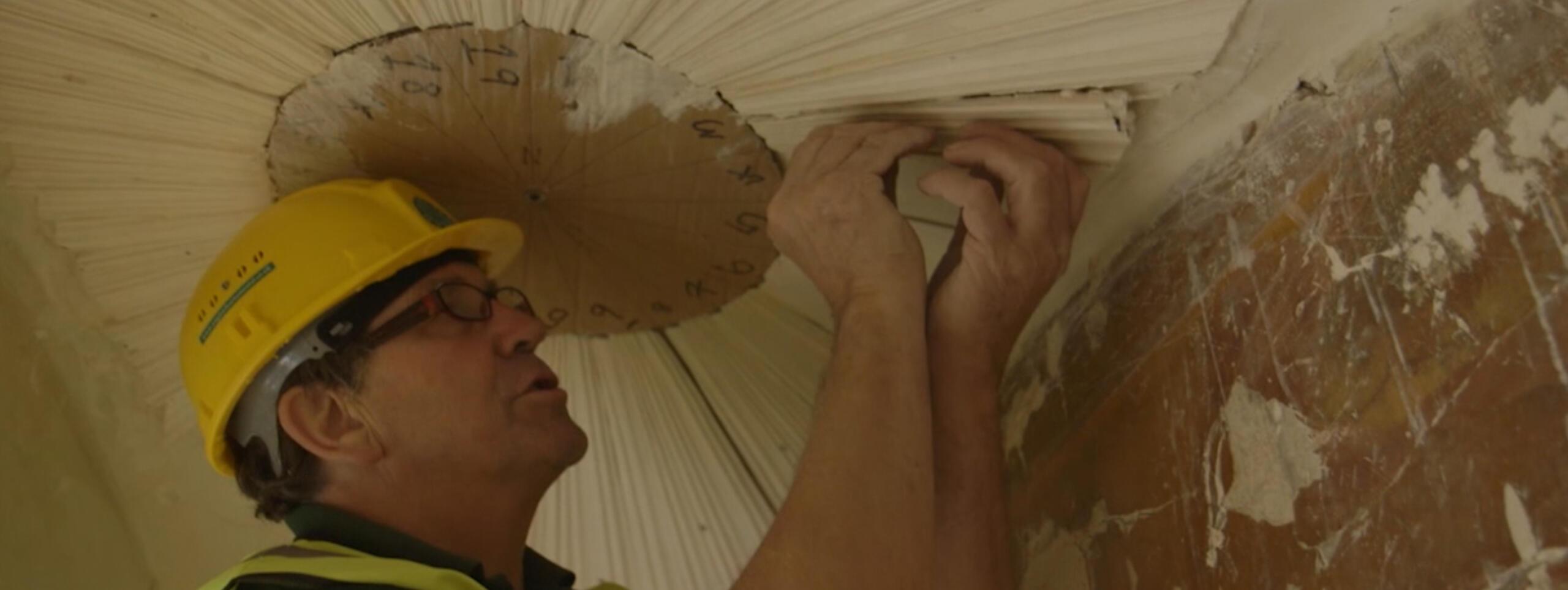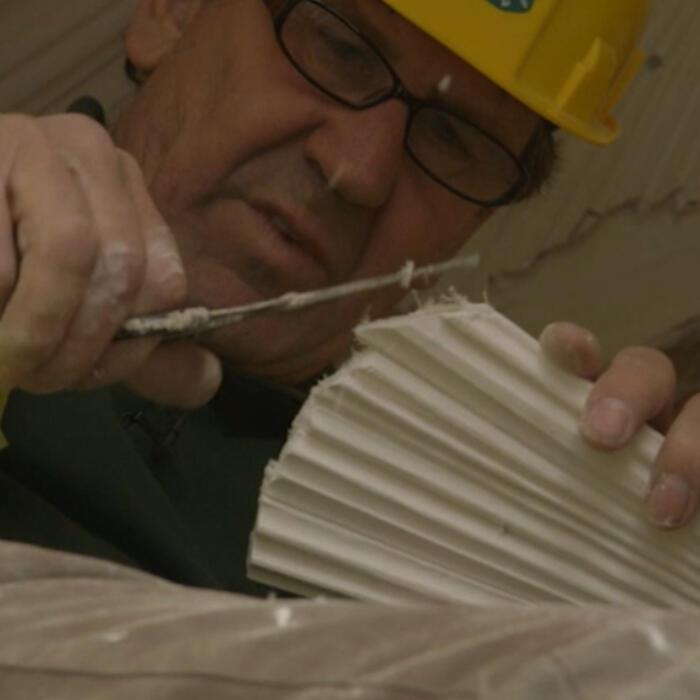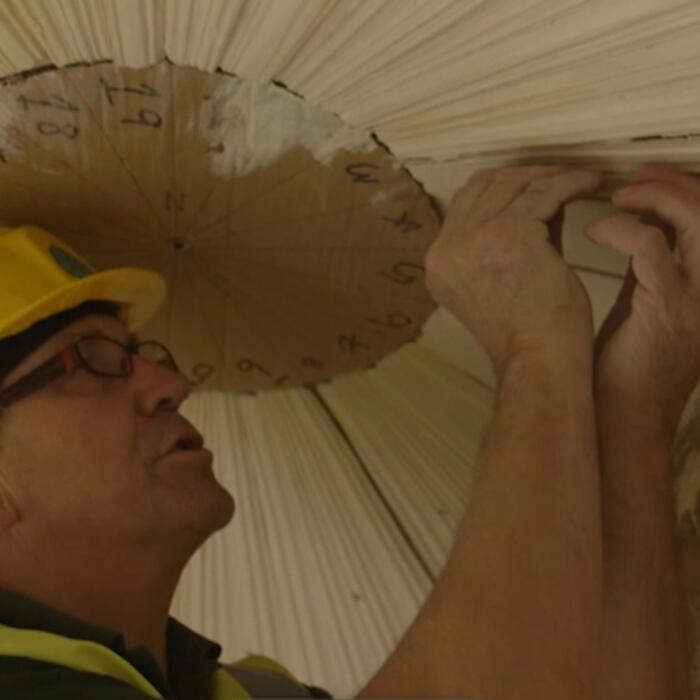The Tivoli Recess, a tiny space half-way up the main staircase, was originally a closet which was then transformed by Sir John Soane into a space to showcase his collection of contemporary sculpture. As the Museum’s architect, Lyall Thow, explains, when it was a closet the ceiling was plain, unadorned and whitewashed but when it was transformed into a mini-gallery, Soane installed a shallow dome with elaborate ornamentation to create a beautiful and intricate plaster ceiling. In the centre was a head of Apollo at the centre of a radiating sunburst whilst at each corner was an eagle above writing serpents and a ‘raffle’ leaf.
This elaborate ceiling was a casualty of late 19th century changes to the Recess and, as part of Opening up the Soane, it was recreated in 2012. The only surviving elements of the original ceiling were two circular curbs left in place above, sitting on modern boarding, which gave us the dimensions of the two circular openings or ‘bell lights’ which allowed light in from above.
Creating the laths Back to top
In this film clip Neil England of England’s Ornamental Plastering describes the process of reconstructing the plaster ceiling ornament, beginning with the sunburst centrepiece, surrounding a cast of Apollo’s head cast from one in Soane’s collection.
The sunburst is composed of plaster laths (thin strips of material covered in plaster) in three layers and Neil must work high up in a tiny cramped space from scaffolding, reaching above his head as he trims and fits the laths. The laths themselves needed to be so thin that the only material that could be used to form them was cotton lint (as Neil observes ‘rather like your grandmother’s curtains) dipped in plaster. Each plaster ray has to be trimmed to the precise size specified in the complex architects drawing – itself the product of a huge amount of research to get the dimensions precisely right.
Sticking up the laths Back to top
Neil checks each lath fits before sticking it in place using lime and alpha plaster (top quality casting plaster, which is very fine, hard and strong) – just as the workmen from Thomas Palmer and Son who made the original ceiling for Soane would have done. Neil comments that this is one of the most complex ‘stick ups’ he has ever carried out. Each lath must be placed absolutely precisely because if it is so much at 1mm out of place that will show when the next one is put in place. As soon as the lath is in position Neil must quickly clean off surplus plaster and check that it lines up precisely.
Once the sunburst at the centre of the ceiling is complete Neil moves on to the fixing of the decorative elements at the four corners of the dome, each one composed of three elements – eagle, snakes and a leaf, each cast separately and transported as three pieces to the Museum for fixing. They were carved by EOP’s sculptress Sarah Mayfield and then cast using high Alpha casting plaster in a mix probably a bit, as Neil says, ‘tougher’ than the one used by Soane’s men but otherwise just the same.
This was a very complex project involving years of research into sunburst ceilings and carved snakes and eagles in other locations and Apollo heads and leaves in Soane’s collection. The geometry of the ceiling itself required a huge amount of work to get the dimensions just right and to calculate exactly how the ornaments worked. In the end, as Neil England says at the end of this clip, everyone did their very best working with extraordinary precision to achieve a result as close to how the ceiling looked in Soane’s time as it could possibly be.


